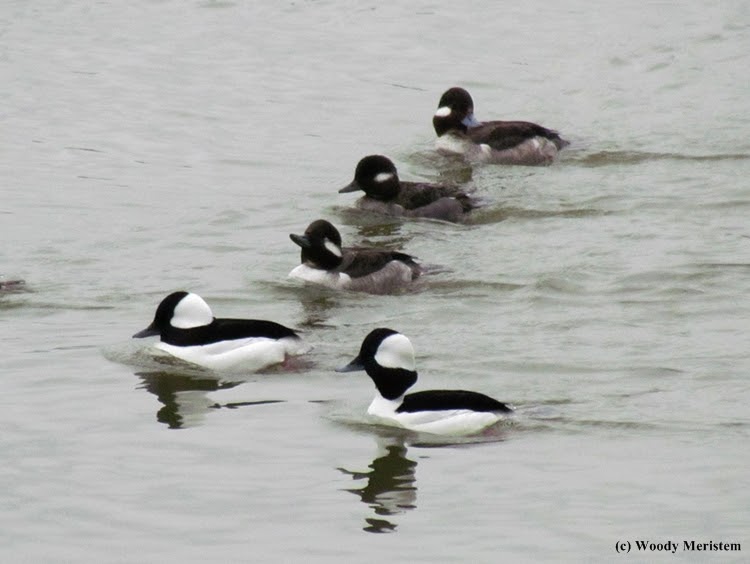Four days
ago it was 17°
F at the house when dawn broke.
In the Big Woods most of the snow has melted, but there are spots in the deep
hollows and narrow valleys where snow and ice still lays in cool shady spots. Nonetheless,
spring is in the air. April showers have arrived a bit early, with light rain
on Thursday and again this afternoon and a temperature in the 50s yesterday. When
I left the house this morning a Carolina wren was singing in the oak tree in
the yard.
Heading for
the Big Woods this morning, I passed a field where a small flock of wild
turkeys were reacting to the lengthening days. All five toms in the flock were
in full display, three of them within pecking distance of each other.
There was an
occasional gobble from yet another tom that was out of sight in the woods, but
I never saw one of the displaying birds respond. The hens in the field didn’t
seem to pay any attention to the displaying males strutting around.
The colors
shown by the males are truly striking, varying with their orientation to the
sun.
After 60
years, I still remember my first sighting of wild turkeys as my father and I
drove to town; they were also the first he’d ever seen. The wild turkey has
been a wildlife management success story. For all practical purposes turkeys
were extirpated from much of the northeast by 1900. Many states tried to
reintroduce wild turkeys using pen-raised birds, but these efforts were an
abject failure – birds that could survive in a pen were unable to survive in
the wild. In 1936 the Pennsylvania Game Commission attempted to improve its
success by penning hens in ten-acre enclosures in the few areas where wild
populations remained. Wild toms could fly into the enclosures to mate with the
hens; eggs were collected and the poults reared and released. Years ago, in a
remote area of the Big Woods along a small stream I found the remains of one of
the pens: chestnut posts and rusty woven wire fencing.
Turkeys are
back in all of their historic range no thanks to the release of pen-raised
birds, but because trap and transfer of wild birds and restrictions on hunting
resulted in expansion of populations.
.JPG)
.JPG)

.JPG)
.JPG)





.jpg)




.JPG)
.jpg)
.jpg)


+s.jpg)
.jpg)
.jpg)
.jpg)
